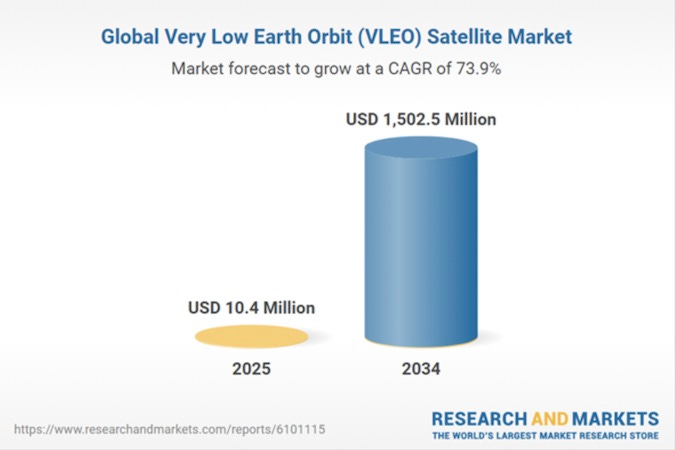VLEO Satellite Market Poised for Exponential Growth: Report
CAGR Could Reach Nearly 74 Percent over the Next 10 Years
The Very Low Earth Orbit (VLEO) Satellite Market is projected to reach $1.502 billion by 2034, rising from $10.4 million this year, growing at a CAGR of 73.9% according to a new report from BIS Research.
The global very low earth orbit (VLEO) satellite market is in an accelerated growth phase, propelled by increasing investments in satellite constellatio…




